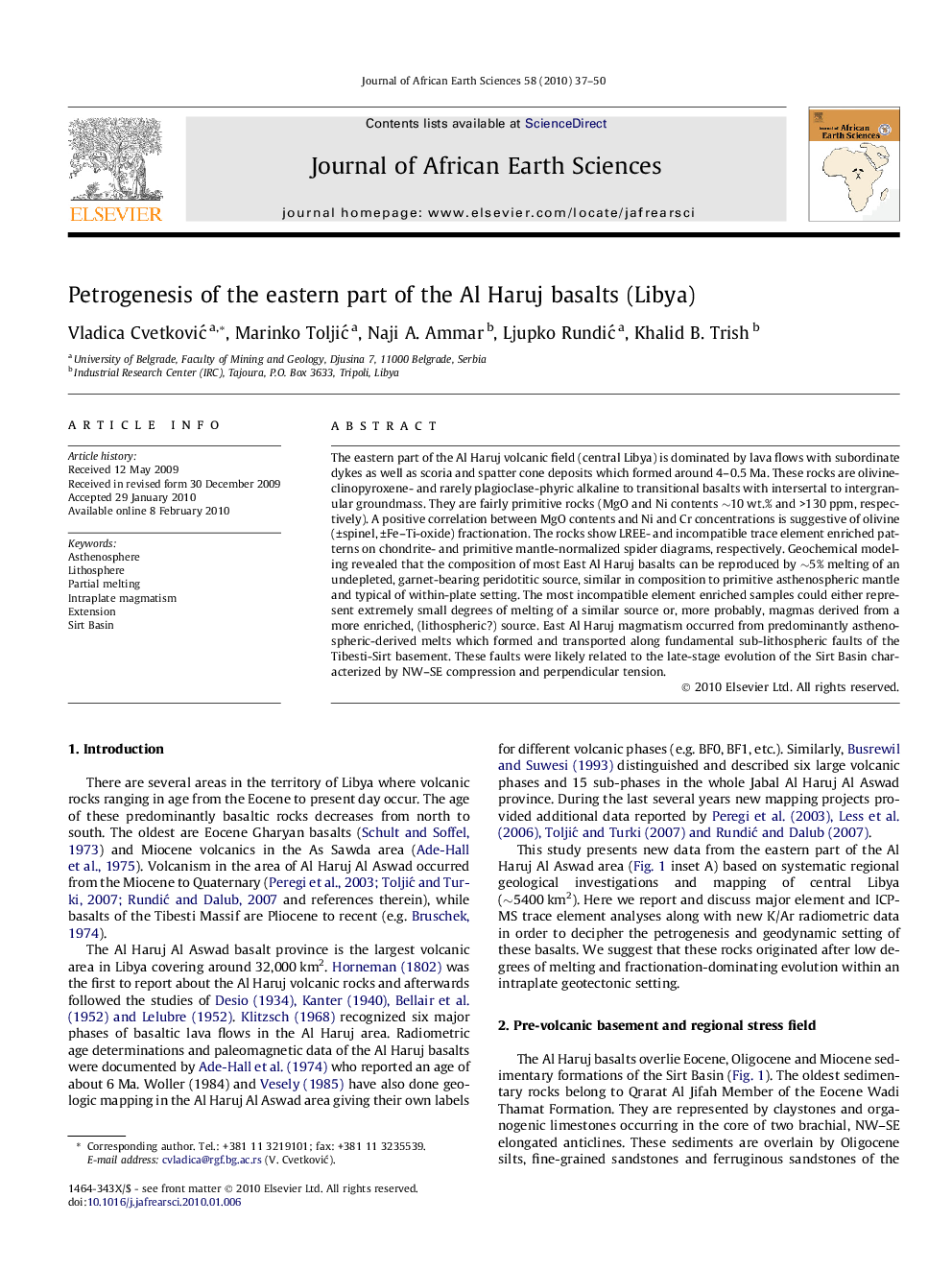| کد مقاله | کد نشریه | سال انتشار | مقاله انگلیسی | نسخه تمام متن |
|---|---|---|---|---|
| 4729473 | 1356533 | 2010 | 14 صفحه PDF | دانلود رایگان |

The eastern part of the Al Haruj volcanic field (central Libya) is dominated by lava flows with subordinate dykes as well as scoria and spatter cone deposits which formed around 4–0.5 Ma. These rocks are olivine- clinopyroxene- and rarely plagioclase-phyric alkaline to transitional basalts with intersertal to intergranular groundmass. They are fairly primitive rocks (MgO and Ni contents ∼10 wt.% and >130 ppm, respectively). A positive correlation between MgO contents and Ni and Cr concentrations is suggestive of olivine (±spinel, ±Fe–Ti-oxide) fractionation. The rocks show LREE- and incompatible trace element enriched patterns on chondrite- and primitive mantle-normalized spider diagrams, respectively. Geochemical modeling revealed that the composition of most East Al Haruj basalts can be reproduced by ∼5% melting of an undepleted, garnet-bearing peridotitic source, similar in composition to primitive asthenospheric mantle and typical of within-plate setting. The most incompatible element enriched samples could either represent extremely small degrees of melting of a similar source or, more probably, magmas derived from a more enriched, (lithospheric?) source. East Al Haruj magmatism occurred from predominantly asthenospheric-derived melts which formed and transported along fundamental sub-lithospheric faults of the Tibesti-Sirt basement. These faults were likely related to the late-stage evolution of the Sirt Basin characterized by NW–SE compression and perpendicular tension.
Journal: Journal of African Earth Sciences - Volume 58, Issue 1, August 2010, Pages 37–50